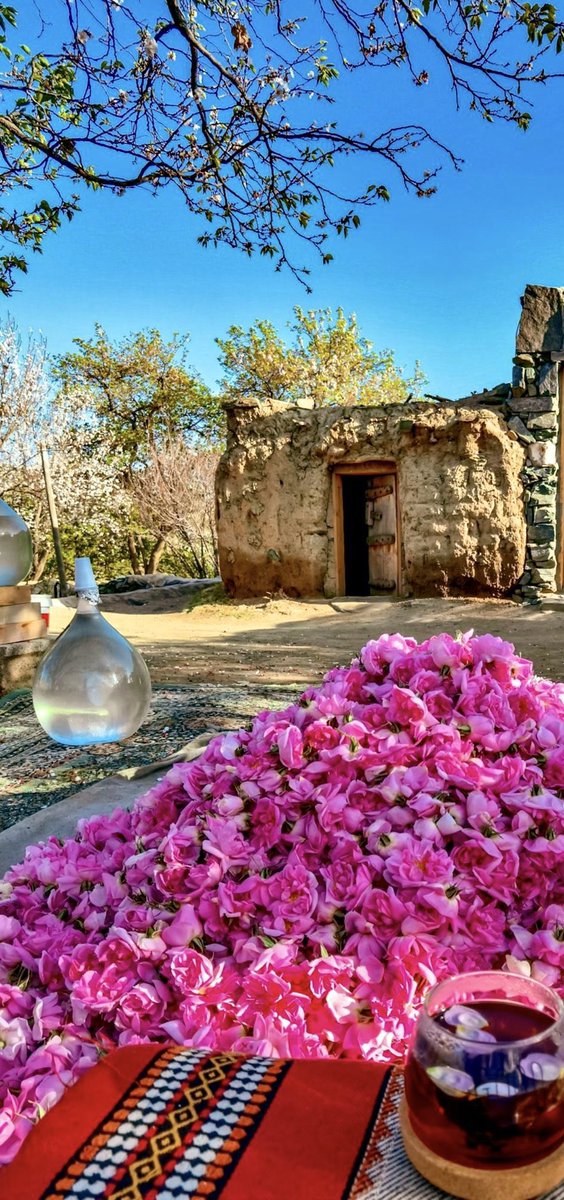Each year, the residents of central Mali work together to preserve one of the most iconic structures in both Islamic & African architectural history: the Great Mosque of Djenne, the world’s largest mud-brick structure.
This epic one-day event is called the Crépissage
A thread…
This epic one-day event is called the Crépissage
A thread…

1/ Located in southern Mali, the Great Mosque of Djenné is a unique structure that instantly captures the imagination. Nearly 20m high & built on a 91m-long platform, it's the world's largest mud-brick building and the finest example of Sudano-Sahelian architecture 

2/ The walls of Djenné's Great Mosque are reconstructed with mud each April in the Crépissage
Not only is the Crépissage an act of maintenance to protect the mosque from crumbling, it's also a festival to celebrate community, faith & heritage
Not only is the Crépissage an act of maintenance to protect the mosque from crumbling, it's also a festival to celebrate community, faith & heritage

3/ Djenné was founded between 800 and 1250 C.E., and it flourished as a great center of commerce, learning, and Islam, which had been practiced from the beginning of the 13th century. 

4/ The entire city of Djenne is built from mud, which is a material well suited to the extreme weather conditions in that the thick walls of the buildings retain the cool from the earth and the relatively chilly nights. 

5/The Mosque has 3 distinctive minarets with hundreds of sticks of rodier palm, known as 'toron' jutting out from the walls. It remains cool during the hottest days. A lattice of 90 internal wooden columns supports the roof & the walls which provide insulation from the sun's heat 

6/ The walls of Djenné's Great Mosque are reconstructed with mud each April in an epic one-day event called the Crépissage (Plastering). The structure requires annual reinforcement – as do the town's traditional adobe homes before Mali's rainy season which occurs in July & August 

7/ This immense undertaking of reconstruction ensures that the mosque will survive the rainy season, despite altering in shape ever so slightly each year. 

8/ Not only is the Crépissage an important act of maintenance designed to protect the mosque's walls from cracking and crumbling, but it's also a festival that celebrates Djenné's community, faith and heritage 

9/ The bricks of the Djenne mosque are formed from banco, a term for the mixture of clay, water, shea butter, baobab tree powder and rice husks that form this mud. 

10/ The mud is first collected from the river and brought into town where it is left to mature in great mounds in the streets in front of the houses or in special large vats in front of the mosque 

11/ After around three weeks of fermentation, the mud is mature and ready for plastering onto the walls-this is always done directly by the hand. 

12/ The night before the rebuilding, the villagers take part in a carnival of singing and dancing known as La Nuit de Veille, or The Waking Night 

13/ The whole community of Djenné takes part in the annual repair of the mosque during a festival called Crepissage de la Grand Mosquée. A race is held at the start of the festival to determine who will be the first to deliver the plaster to the mosque. 

14/ Once the Crépissage is underway, teams from each neighbourhood in Djenné race to re-plaster the mosque, albeit carefully and precisely. 

15/ Under the supervision of a guild of 80 senior masons, a highly revered profession in Djenné, young men scramble up the building's façade carrying wicker baskets dripping with wet clay to smear in thick layers onto the walls, using the toron like ladder rungs. 

16/ One of the most unique features of the mosque’s architecture is its roof. The roof is made of palm branches that are woven together and supported by wooden pillars.
The roof is then covered with a layer of mud, which helps to insulate the building from the sun’s heat.
The roof is then covered with a layer of mud, which helps to insulate the building from the sun’s heat.

17/ Djenné is characterized by “exceptional architecture and its urban framework, of unusual harmony,” according to UNESCO, and the Great Mosque exemplifies this. Despite its centuries-long history, the mosque continues to play an important role in modern culture. 

18/ Today, the Great Mosque of Djenné is a remarkable testament to the ingenuity of Mali’s mud architecture and the remarkable preservation of its traditional building techniques. 

19/ The citizens of Djenne aim for this beautiful and unique structure to be kept as traditional as possible, resisting modernisation. Consequently, the only added modern aspect of the mosque since its creation is a loudspeaker system, for the adhaan to be heard from a distance. 

20/ While there are mosques that are far older than this still standing today, the Great Mosque of Dijenne in Mali has a uniqueness that makes it one of the architectural wonders of the world. 

• • •
Missing some Tweet in this thread? You can try to
force a refresh

 Read on Twitter
Read on Twitter





















